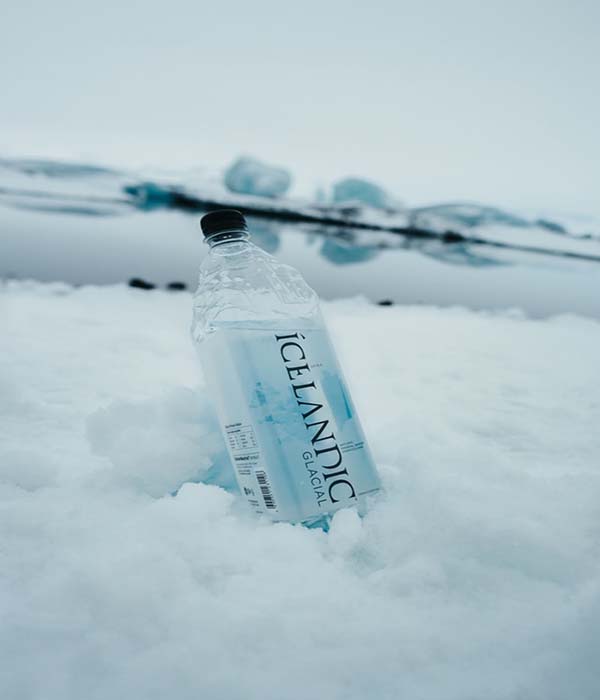Can You Drink Glacier Water? Read Before Your Glacier Tour
Share
Glacier tours are most people’s most-cherished outdoor activities. The fact that there are many areas to explore makes such an outing unforgettable.
There’re bunch of items glacier explorers need to carry along. One of them is water. Like in other natural habitats, you won’t find much drinkable water in a glacier. Most people also do not fancy the idea of drinking glacier water.
You would need drinkable water to rehydrate and survive life in the glacier. But while many have no issues drinking glacier water, others are totally against it.
In this post, we will solve the mystery of drinking glacier water. After reading, you can decide if you want to keep drinking such water or not. So continue reading.
First and foremost, let’s answer the question.
Can You Drink Glacier Water?
It’s not advisable to drink glacier water, even if the water appears clean. It could be contaminated by organic or inorganic pollutants or even a microscopic parasite. So, anything can happen when one consumes melted glacial water. One could get sick immediately or after a couple of weeks or months. So it would be best to avoid glacier water. Why? You can’t tell if it is contaminated by looking at the water or because others said so. Only a lab test can justify that.
Surprisingly, research has confirmed that fecal bacteria buried in glaciers can survive for many years. It’s like storing food items in a freezer, as this would extend the items’ shelf-life.
When the fecal bacteria find their way into the glacier water, they automatically make the water unsafe for drinking. These bacteria tend to flow downhill together with the ice. And consequently, they can even infect other water sources down below.
Finding poop from humans at the glacier isn’t a new thing. The Kahlitna Glacier, the Alaska Range’s longest mountain, has received over 34000 climbers since 1970. But these visitors have released poop weighing over 66 metric tons.
So, the fact that the glacier water is looking all clean and iced doesn’t mean the water is drinkable. It could be contaminated, and you have no way of knowing this.
Is All Glacier Water Unsafe For Drinking?
The truth is some glacier water could be safe for drinking. So, no! Not all glacier water is undrinkable. The only major issue is to know which is safe and which isn’t. It’s not something you can figure out with your naked eyes.
So, if you run out of water while glacier hiking, don’t just go about drinking any water that you come across. Make sure you filter and purify the water before drinking.
You can also ask the locals. But remember that most chemical pollutants in the water won’t affect one’s health until after several weeks, months, or a couple of years.
What Makes Most Glacier Water Undrinkable?
Here are factors that can make glacier water unfit for drinking.
Human poop:
Depending on how acclimated one is, it might take 20 to 30 minutes to hike a glacier. Climbing down would take a bit longer or shorter, depending on the individual too.
There are also no toilets in the glacier. And even if a pressed climber decides to rush back to the hotel, he or she may not make it.
Therefore, whenever climbers feel the need to poop, they pass it out or urinate in the mountain. The poop may only remain on the glacier surface for a while before the ice buries it.
Poop released by climbers can remain in the mountain, buried in the ice, for donkey years without disintegrating. The ice preserves them the same way steak stays longer in a freezer.
Climate change has been more intense in the last couple of years. Therefore, there is more ice melting at the glacier. Consequently, preserved poops are also melting and making their way into glacier water.
So, the ice-blue water you find pouring out of a gorgeous mountain glacier isn’t as safe as you think. There could be traces of human poop and fecal bacteria that could be harmful to you.
Dead animal remains:
Glaciers are melting fast due to global warming. And as they retreat, they give up bodies of dead animals and even plants.
It’s common to find carcasses of animals in the glacier. Frogs, bison, chamois, rhinoceroses, woolly, horses, ibex, wolverine, and birds have all been discovered frozen in the glacier.
When these animals die, they are buried in the glacier over time. The ice preserves the carcasses for many decades or even a century. For example, in Serbia, a bird was found buried in ice. And it has been there for over 46 years.
So, when the glacier ice melts and the animal carcasses make it to the water, they can contaminate it. These dead animal remains contain harmful bacteria and micro-organisms, making the glacier water unsafe for drinking.
Clay and silt:
Yes, silt and clay can pollute glacier water, making it undrinkable. These particles could make the water appear cloudy.
If the water were polluted by clay or silt particles alone, filtering would make it safe to drink. But the problem is there could be contaminants in the water you may not be able to spot or get rid of via filtering.
Inorganic and organic contaminants:
Scientists have discovered traces of organic and inorganic pollutants in an amount that exceeds the human-health benchmark in glaciers and their melting water.
Common inorganic contaminants in water include fluoride, nitrates, nitrates, cadmium, arsenic, mercury, and other heavy metals.
On the other hand, common organic contaminants in water include phenols, azo dyes, pesticides, herbicides, polyaromatic hydrocarbons, endocrine-disrupting chemicals, and polychlorinated biphenyls.
If any of these pollutants are present in the glacier water, which you can’t detect by merely looking at the water, drinking, it could be disastrous.
Unfortunately, glacier water could be looking pretty clean and blue but still contain some harmful pollutants. And the worst part is that the effects of drinking contaminated water may only appear after a while.
Because many people don’t get sick immediately after drinking glacier water, they may conclude that it was safe for consumption.
By the way, how did you know the water was safe for drinking when you didn’t test it in a laboratory?
The fact that you didn’t notice any deterioration in your health or have diarrhea doesn’t mean the glacier water you drank was safe. You can only be utterly sure after testing the water in a lab.
Microscopic parasite:
The fact that glacier water temperature is low doesn’t mean living things cannot survive there. Some microscopic parasites can stay at the glacier for months.
An example is a giardia, which happens to be a microscopic parasite. And according to studies, Giardia cyst can survive in cold water ranging from 0 to 10 degrees centigrade for a minimum of two months.
Giardia is commonly found in food, soil, and water surfaces contaminated by feces of infected animals or humans. Drinking water containing this microscopic parasite can cause diarrhea illness called giardiasis.
Giardiasis may go away in healthy individuals within a few weeks with or without treatment. But in most cases, it can be a long-term health issue if left untreated for a long time.
A Handy Tip: Do not drink water from any natural source unless after purification. The water could be looking clean and yet be unsafe for drinking.
How To Make Glacier Water Safe For Drinking
As you plan to explore and enjoy the great outdoors, think about meeting your water needs. Keep in mind that portable or safe drinking water may not be available to you always.
By portable water, we mean drinkable water or water that’s safe for brushing your teeth, cooking, and washing your hands.
So, how can you make glacier water safe for drinking?
After collecting the water, consider boiling it. Boiling will help to eliminate harmful bacteria and microscopic parasites, depending on how long you boil the water, though.
When you finish boiling, filter the water. You would find many portable Glacier water filters in the market that can do the job.
Conclusion
The question “can you drink glacier water” is highly controversial. Many people claim that they have consumed different glacier water and yet, not experience any health issues.
The truth is, one might not feel the health implication immediately if organic or inorganic pollutants contaminated the water. So, the best advice is not to drink glacier water until you have purified it.

















